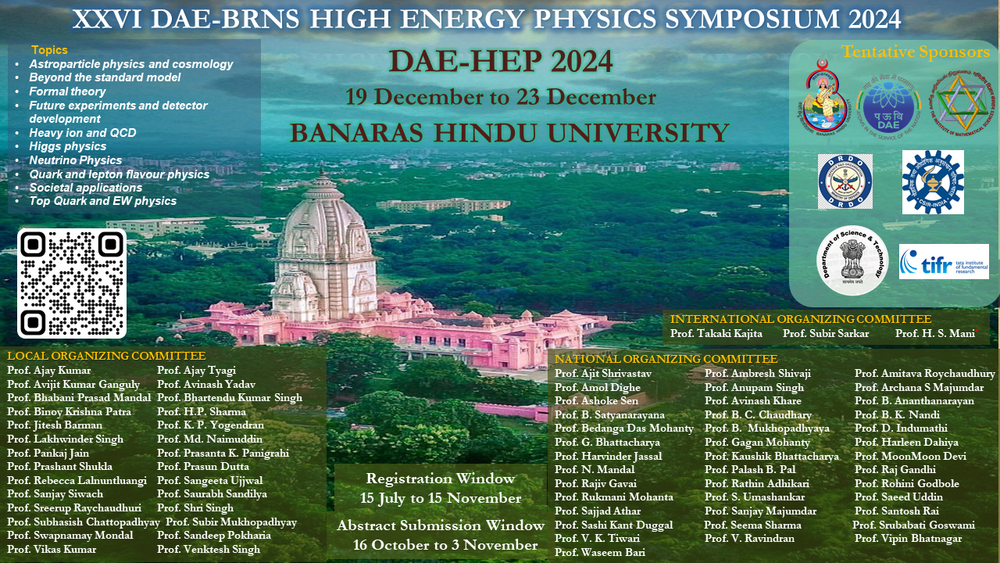Speaker
Description
One of the major motivations for the planned p--O and O--O collisions at the LHC is to explore the possibilities of small system collectivity. Such transverse collective expansion results in the appearance of long-range azimuthal correlation and is quantified via the coefficients, $v_{\rm n}$, of Fourier expansion of the azimuthal momentum distribution of the final-state particles. These flow coefficients serve as the medium response to the initial spatial anisotropy and are sensitive to the density profile of the colliding nuclei. Light nuclei such as $^{12}\rm C$ and $^{16}\rm O$ are theorized to possess extra stability due to the presence of an $\alpha$-clustered arrangement of its nucleons. In this context, studies on ultra-relativistic p--A collisions involving $^{12}\rm C$ or $^{16}\rm O$ nuclei can serve a dual purpose: exploring small system collectivity along with investigating the effects of a clustered nuclear geometry on the medium anisotropy. With this motivation, for the first time, we study p--O and p--C collisions at $\sqrt{s_{\rm NN}}$ = 9.9 TeV through a multi phase transport model (AMPT) simulations. We attempt to explore how an initial $\alpha$-clustered nuclear structure of $^{16}\rm O$ and $^{12}\rm C$ influences the production yield, initial eccentricities and flow coefficients in the final state, in comparison to an unclustered density profile, Sum-Of-Gaussians (SOG). The flow coefficients are estimated via a two-particle Q-cumulant method.
The results show that $\langle\epsilon_{2}\rangle$ varies with centrality in a unique manner for $\alpha$-clustered p--O and p--C collisions, similar to O--O collisions. However, the centrality dependence of $\langle\epsilon_{2}\rangle$ and $\langle\epsilon_{3}\rangle$ is not effectively carried forward to the final state $v_{2}$ and $v_{3}$, owing to lesser participants. We also see that the dependence of $v_{2}$ on centrality is much less in comparison to $v_{3}$, which is reflected in the $v_{3}$/$v_{2}$, $v_{2}$/$\langle\epsilon_{2}\rangle$ and $v_{3}$/$\langle\epsilon_{3}\rangle$ ratios studied in our work. We notice that the $\alpha$-clustered case shows almost a flatter trend of $v_{3}$ with centrality than the corresponding collisions with a SOG profile, possibly indicating the discretized internal structure of an $\alpha$-clustered nucleus. Thus, by probing the effects of the nuclear structure employing ultra-relativistic collisions, this work serves as a transport-model-based prediction for the upcoming p--O collisions in the LHC Run$~$3.
| Field of contribution | Phenomenology |
|---|

